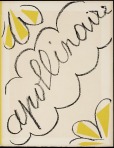
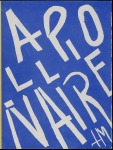
The following biographical and literary information on Guillaume Apollinaire is extracted from the following website: An Introduction to Guillaume Apollinaire.
Guillaume Apollinaire (France, 1880-1918) was the author of a variety of different texts: prose fiction, drama, librettos etc., yet it could be argued that he published only two significant works during his lifetime: Alcools: Poèmes 1898-1913 (1913) and Calligrammes: Poèmes de la paix et de la guerre 1913- 1916 (1918).
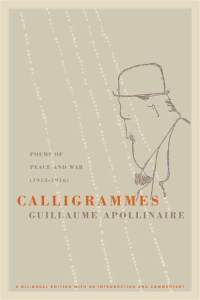 As well as having a keen eye for the visual arts, the visual dimension of writing was extremely important to Apollinaire. Apollinaire took great care over the typographical layout of his work. Technical developments such as the phonograph, the telephone, radio and cinema had provided new ways of storing and diffusing language without recourse to the written word. For Apollinaire, writing no longer had the same role, its status had changed and Apollinaire was one of the first to interrogate this. I say `one of the first’, since the Symbolist poet Stéphane Mallarmé published his Un Coup de dès jamais n’abolira le hasard (1897) sixteen years before Alcools which included typography carefully orchestrated into a symbolic pattern with different sized words twisted into strange shapes performing a ballet-like movement within the monochrome limits of the printed page. For Apollinaire, as for Mallarmé before him, language was something to be experienced for its concrete and graphic shapes, for its potential to convey meanings in other ways. Apollinaire insists on the `materiality’ of language, that is to say, its existence as visual marks of white on black or as patterns of sound. Michel Butor claims that Apollinaire’s significance as a poet resides in:
As well as having a keen eye for the visual arts, the visual dimension of writing was extremely important to Apollinaire. Apollinaire took great care over the typographical layout of his work. Technical developments such as the phonograph, the telephone, radio and cinema had provided new ways of storing and diffusing language without recourse to the written word. For Apollinaire, writing no longer had the same role, its status had changed and Apollinaire was one of the first to interrogate this. I say `one of the first’, since the Symbolist poet Stéphane Mallarmé published his Un Coup de dès jamais n’abolira le hasard (1897) sixteen years before Alcools which included typography carefully orchestrated into a symbolic pattern with different sized words twisted into strange shapes performing a ballet-like movement within the monochrome limits of the printed page. For Apollinaire, as for Mallarmé before him, language was something to be experienced for its concrete and graphic shapes, for its potential to convey meanings in other ways. Apollinaire insists on the `materiality’ of language, that is to say, its existence as visual marks of white on black or as patterns of sound. Michel Butor claims that Apollinaire’s significance as a poet resides in:
“… la conscience aiguë qu’il a toujours gardée de la réalité physique du langage; on peut dire qu’il a fait retomber la poésie sur la terre dans son admirable incapacité d’oublier que les mots c’est d’abord quelque chose que l’on entend, et que l’on voit.”
M. Butor, Monument de rien pour Apollinaire
In his later collection of poems, Calligrammes, Apollinaire incorporated words, letters and phrases into complex visual collages. The black on white of the printed page became a new field of experimentation. He experimented with a poetry in which a simple reading along the familiar linear axes (left to right, top to bottom) was no longer possible. The page became a sort of canvas for experimentation with different spatial relationships and with the possibility of multiple readings along different axes.
Examples of some of Apollinaire’s most celebrated Calligrammes:

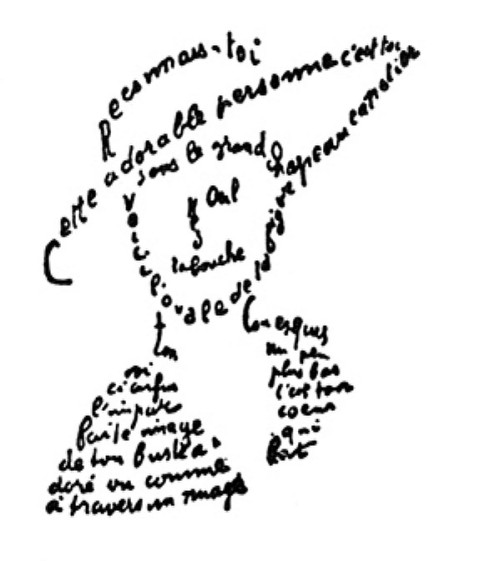
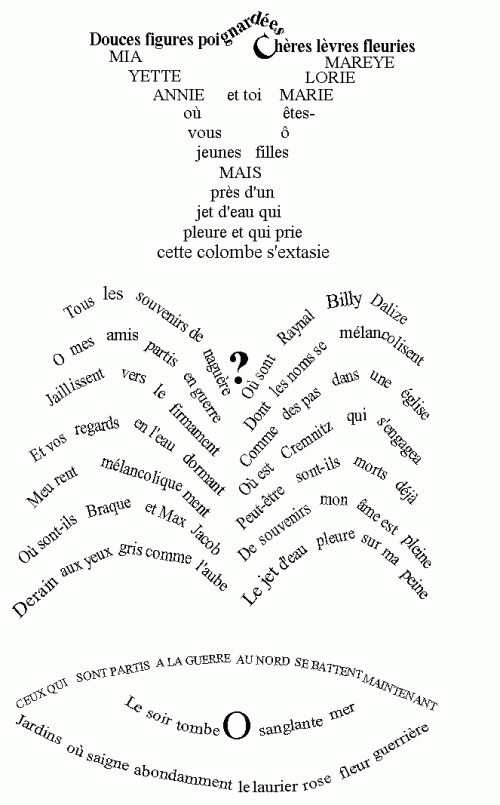


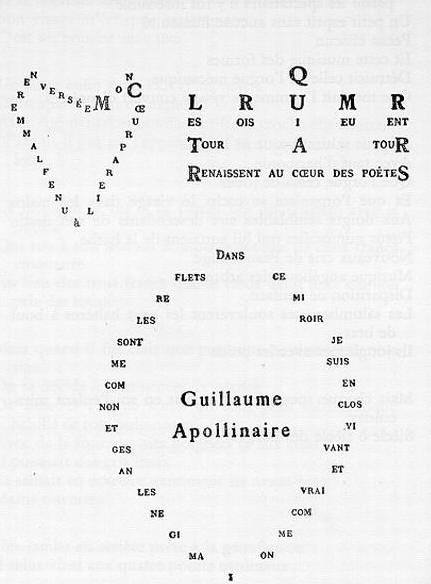
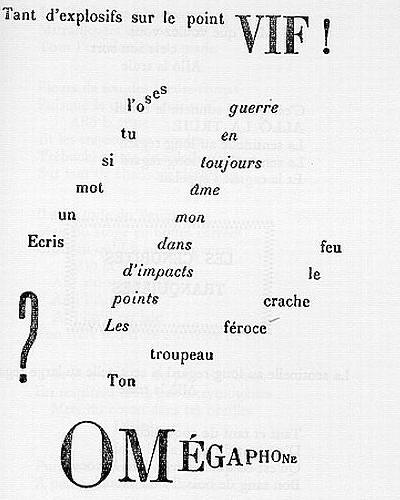
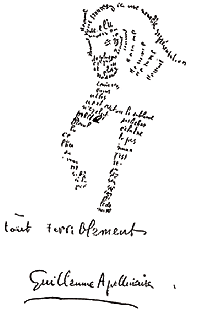
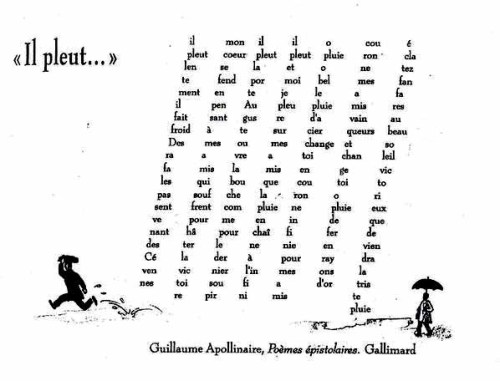
Posted in French, literature, Type
Tagged Alcools, Apollinaire, Butor, Calligrammes, Coeur, Cravate, Eiffel Tower, France, French, French literary figures, French poets, Guillaume Apollinaire, heart, Il pleut, letters, literature, Mallarmé, Michel Butor, phrases, poetry, rain, spatial relationships, symbolism, symbolist poetry, tie, Tour Eiffel, visual arts, words

























